The Martyrdom of Saint Catherine may refer to one of a number of paintings:
The Martyrdom of Saint Catherine may refer to one of a number of paintings:

Canonization is the declaration of a deceased person as an officially recognized saint, specifically, the official act of a Christian communion declaring a person worthy of public veneration and entering their name in the canon catalogue of saints, or authorized list of that communion's recognized saints.
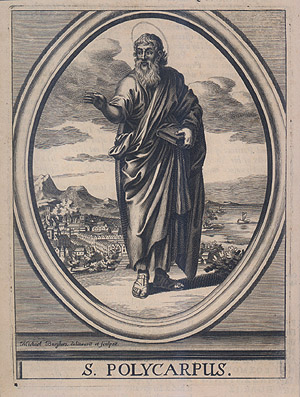
Polycarp was a Christian bishop of Smyrna. According to the Martyrdom of Polycarp, he died a martyr, bound and burned at the stake, then stabbed when the fire failed to consume his body. Polycarp is regarded as a saint and Church Father in the Catholic, Eastern Orthodox, Oriental Orthodox, Anglican, and Lutheran churches.

Pope Telesphorus was the bishop of Rome from c. 126 to his death c. 137, during the reigns of Roman Emperors Hadrian and Antoninus Pius. He was of Greek ancestry and born in Terranova da Sibari, Calabria, Italy.
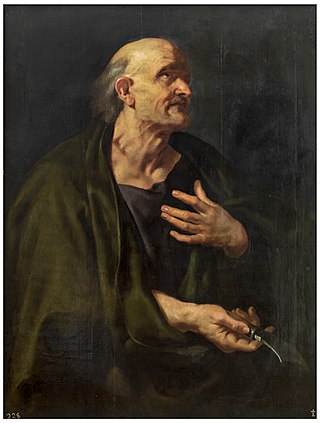
Bartholomew was one of the twelve apostles of Jesus according to the New Testament. He is also commonly identified as Nathanael or Nathaniel, who appears in the Gospel of John when introduced to Jesus by Philip, although some modern commentators reject the identification of Nathanael with Bartholomew.

Catherine of Alexandria is, according to tradition, a Christian saint and virgin, who was martyred in the early fourth century at the hands of the emperor Maxentius. According to her hagiography, she was both a princess and a noted scholar who became a Christian around the age of 14, converted hundreds of people to Christianity and was martyred around the age of eighteen. More than 1,100 years after Catherine's martyrdom, Joan of Arc identified her as one of the saints who appeared to and counselled her.
St. Catherine or St. Katherine may refer to a number of saints named Catherine, or:
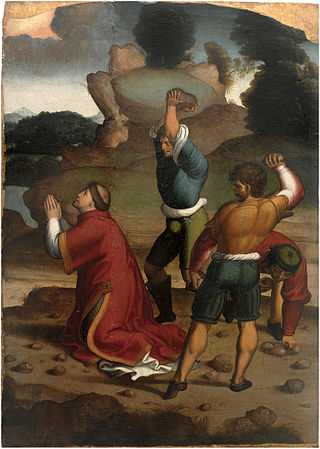
In Christianity, a martyr is a person considered to have died because of their testimony for Jesus or faith in Jesus. In years of the early church, stories depict this often occurring through death by sawing, stoning, crucifixion, burning at the stake or other forms of torture and capital punishment. The word martyr comes from the Koine word μάρτυς, mártys, which means "witness" or "testimony".

Żurrieq is a town in the Southern Region of Malta. It is one of the oldest towns in the country, and it has a population of 11,823 inhabitants as of March 2014. Żurrieq is one of the 10 parishes to be documented in 1436 and it is dedicated to Saint Catherine. The island of Filfla is administratively a part of the town. The town stretches from Nigret to Ħal Far. In old times the town was had a border with Żejtun. The village of Qrendi used to be part of the parish of Żurrieq until 1618 when it was made into its own parish.

The Imperial Order of Saint Catherine was an award of Imperial Russia. Instituted on 24 November 1714 by Peter the Great on the occasion of his marriage to Catherine I of Russia. For the majority of the time of Imperial Russia, it was the only award for women; the Insignia of Saint Olga existed briefly from 1916 to 1917, but ceased with the fall of the Romanov dynasty.

Mattia Preti was an Italian Baroque artist who worked in Italy and Malta. He was appointed a Member of the Order of Saint John.
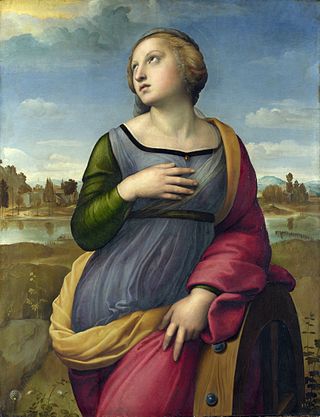
Saint Catherine of Alexandria is a painting by the Italian Renaissance artist Raphael. In the painting, Catherine of Alexandria is looking upward in ecstasy and leaning on a wheel, an allusion to the breaking wheel of her martyrdom.
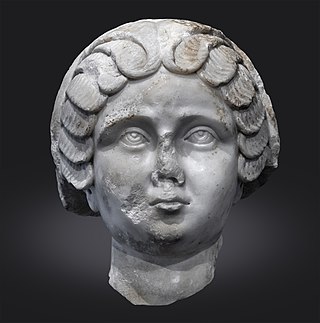
Valeria Maximilla was the Empress of the Romans and wife of Emperor Maxentius.

The Madonna in Glory with Saints is a painting by the Italian Renaissance painter Pietro Perugino, dating to c. 1500–1501. It is housed in the Pinacoteca Nazionale of Bologna, Italy.

The Church of St Catherine is a Roman Catholic parish church that serves the village of Żurrieq.
The Martyrdom of St Sebastian may refer to:
Sœur de La Chapelle was a French nun in the second half of the 17th century who wrote a tragedy about the martyrdom of Saint Catherine of Alexandria.
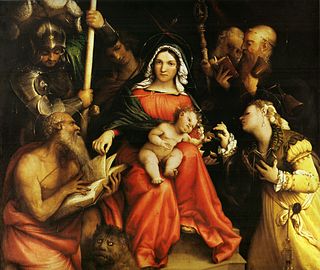
Mystical Marriage of St Catherine and Saints is an oil-on-panel painting by Lorenzo Lotto, signed and dated 1524, now in the Collections of the Galleria Nazionale d'Arte Antica, Rome, Italy.

Self-Portrait as Saint Catherine of Alexandria is a 1615–1617 painting by the Italian Baroque artist Artemisia Gentileschi, showing the artist in the guise of Catherine of Alexandria. It is now in the collection of the National Gallery, London, which purchased it in 2018 for £3.6 million, including about £2.7 million from its American Friends group.

Holy Family with Saint Catherine and Saint John the Baptist is an oil-on-canvas painting by Paolo Veronese, now in the Uffizi in Florence. Its dating is debated, varying between his early period and his late one, the latter influenced by Tintoretto, with the latter the majority view, placing it in c.1562–1565. Some early copies survive, one on parchment by Carlo Loth, one by Gian Antonio Guardi and a third of almost exactly the same dimensions as the original, possibly autograph.
The Martyrdom of Saint Andrew may refer to: